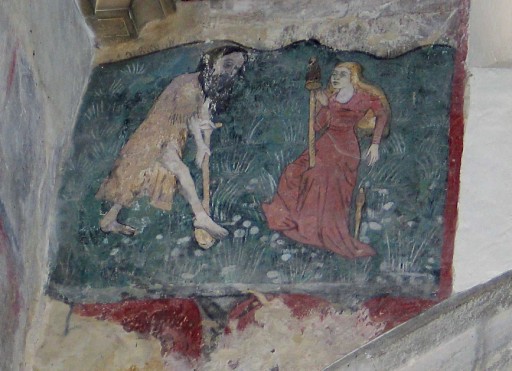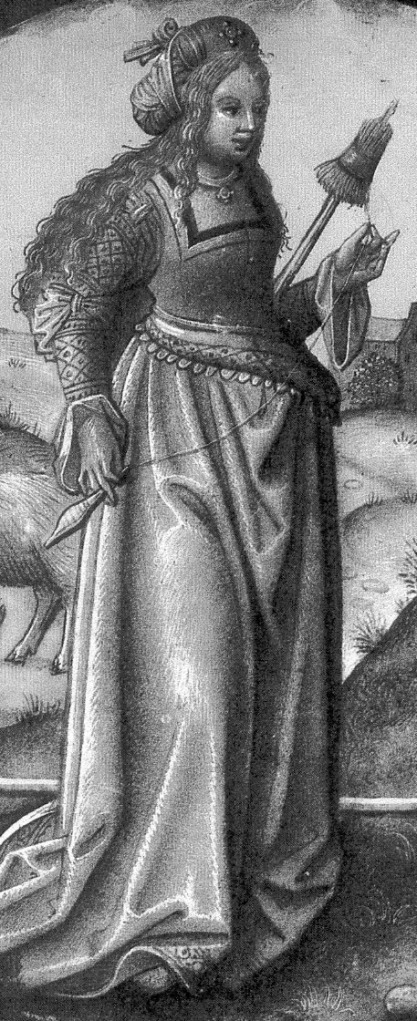I’ve posted a sitting to spin picture before. If I’m sitting on the couch at home then I can trap my distaff between the couch, the arm and my leg. But what if there’s nowhere so easy to keep the distaff standing? Answer, hold it between the knees.

Here you can see a depiction of Adam and Eve. Eve holds the distaff between her legs and appears to be resting the spindle on the ground.

Here is an image from a book of hours. You can’t see her spindle as it’s hidden beside her in her right hand, but she grasps the distaff between her knees as she sits on a basket.

Hours of the Virgin: Terce Annunciation of Christ’s birth to the shepherds. Once again with the distaff between the knees.

In this detail of Proverbs bu Pieter Brueghel the Younger you get a good look at a spindle and once again the distaff is held between the knees.
Distaffs are pretty long and you don’t want one falling over as you’re trying to spin! How do you keep your distaff upright as you spin?













